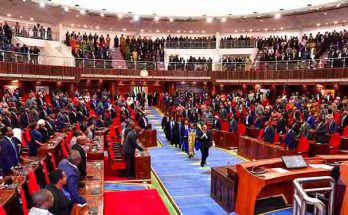
Sales of new motor vehicles across Africa may be bottoming out after years of decline, Mike Whitfield, president of the National Association of Automobile Manufacturers of SA, said at the weekend.
A report by the Automotive Industry Export Council (AIEC) released on Friday showed trade in South African vehicles and components with the rest of the world hit new peaks in 2016. Though the local industry continued to record an overall trade deficit of R32.9bn — R204.1bn in imports against R171.1bn in imports — the gap was down sharply from R45.2bn a year earlier and R62.2bn in 2015.
Many of those imports were aftermarket vehicle parts. If they are taken out of the equation, it could be argued local vehicle and components companies recorded a surplus.
The AIEC report shows that if one only records trade done through the manufacturing-based Automotive Production and Development Programme, the industry exported R23.2bn more than it imported: R171.1bn against R147.9bn.
Components companies exported a record R53bn in goods in 2016.
Renai Moothilal, director of the National Association of Automotive Component and Allied Manufacturers, said the figure was “okay” but that all sectors of the local industry had to work together to increase global penetration.
The big trade balance boost came from vehicles. The shrinking domestic market for new vehicles limited imports but exports achieved a new record of 344,859 in 2016, a figure that Norman Lamprecht, compiler of the AIEC report, believes will be exceeded in 2017.
Most of 2016’s vehicle export growth was to Europe and Asia. Germany — represented in SA by BMW, Mercedes-Benz and Volkswagen and several major components companies — remained the biggest trade partner. Total trade of R116.5bn was made up of R46.8bn in exports and R69.7bn in imports.
Second was the R34.1bn in trade with the US. Here, at least, SA boasted a trade surplus: R22.6bn in exports against R11.5bn in imports.
The big disappointment was Africa. Though SA’s trade surplus — R28.7bn — was the biggest of any region’s, 2016 exports to the rest of the continent fell 49% compared to a year earlier, from 42,234 to 21,564. That is a drop of almost 75% in four years, from 80,293 in 2012.
Plunging oil and commodities prices, allied to a lack of foreign exchange, have eroded governments and consumers’ spending power. The dominance of dumped used vehicles is also a challenge.
Whitfield, whose own company, Nissan SA, relies heavily on Africa for export volumes, said some markets were so slow companies were able to service them with vehicle stock already in the country.
He predicted South African exports to Africa in 2017, compared to 2016, “will be very flat and will then start to show progress”.



